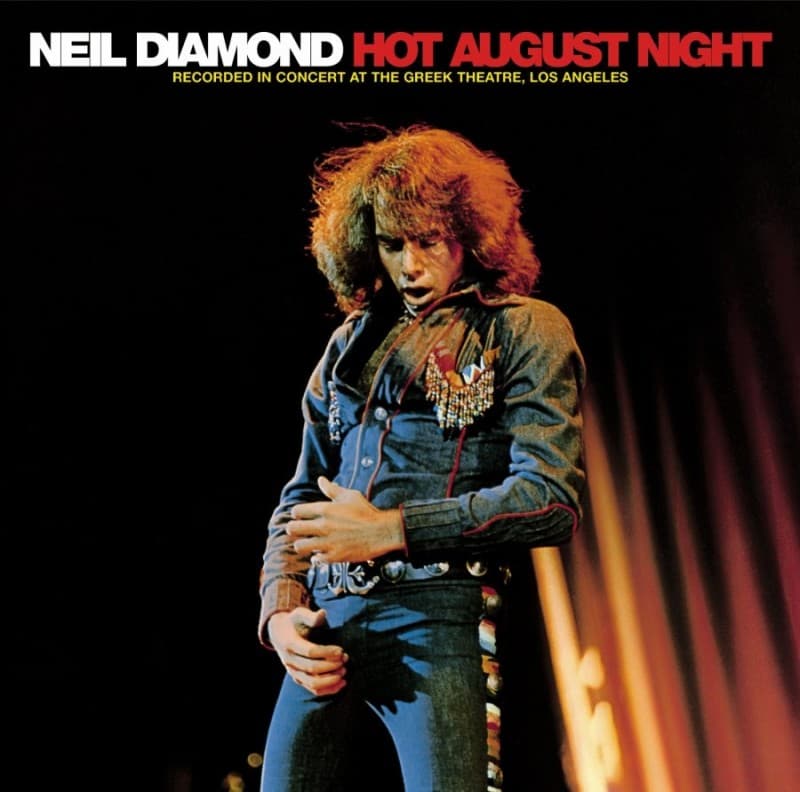
The Existential Cry: A Hauntingly Personal Confession of Loneliness and the Search for Belonging
Neil Diamond‘s profoundly introspective and intensely personal anthem, “I Am… I Said”, is a quintessential example of his unique ability to blend deeply felt emotion with a grand, theatrical sweep. Released as a single in 1971, this powerful ballad became a massive hit, soaring to number 4 on the Billboard Hot 100 pop chart, and even reached number 4 on the Billboard Adult Contemporary chart, showcasing its broad appeal. It was a standout track from his 1971 album, “Stones” (which peaked at number 11 on the Billboard 200 albums chart), and quickly became one of Diamond‘s most recognizable and enduring songs. “I Am… I Said” resonated deeply with millions who found solace and understanding in its raw vulnerability and Diamond‘s passionate, yet nuanced, vocal performance. It further solidified Diamond‘s reputation as a masterful songwriter and performer, appealing to a vast audience with his honest portrayal of inner turmoil and the universal search for self-identity.
The story behind “I Am… I Said” is famously personal and deeply rooted in Neil Diamond‘s own struggles with isolation, fame, and the search for authentic connection. Written entirely by Diamond, the song took him four months to complete, a testament to the profound emotional labor invested in its creation. He has openly stated that the song was a direct result of his experiences living in Los Angeles, particularly the sense of anonymity and alienation he felt despite his growing success. Diamond, a Brooklyn native, found the West Coast’s sprawling, disconnected landscape and the superficiality of some aspects of the entertainment industry deeply disorienting. The lyrics vividly describe a man grappling with a profound sense of loneliness, feeling lost and unable to connect, even when surrounded by others. The famous line “I am, I said, to no one there / And no one heard at all, not even the chair” perfectly encapsulates this existential cry into an unhearing void. It’s a raw confession of vulnerability from a man who was, paradoxically, becoming a global superstar, making the song’s themes of isolation even more poignant and relatable to a vast audience who often feel alone in a crowded world.
The meaning of “I Am… I Said” is a deeply introspective and profoundly personal exploration of loneliness, the struggle for self-identity, and the yearning for authentic connection in a world that often feels isolating. It’s a song about the existential cry of an individual grappling with a sense of anonymity and disconnection, even when surrounded by others or achieving outward success. The lyrics convey a powerful feeling of being lost, misunderstood, and unable to truly communicate one’s inner turmoil, leading to a desperate attempt to assert one’s very existence, even if it feels unheard. The repeated phrase “I am, I said” is both a declaration of being and a desperate plea for recognition. Lines like “I’ve been alone, I’ve been alone / For so long, I don’t know what to do” perfectly capture this profound isolation and the yearning for belonging. It speaks to the universal human experience of grappling with inner demons, the search for meaning beyond material success, and the fundamental desire to be seen, heard, and understood, making it a timeless anthem for anyone who has ever felt like an island in a vast, indifferent sea.
Neil Diamond‘s vocal performance on “I Am… I Said” is nothing short of extraordinary, embodying the raw emotion and existential angst of the lyrics with every note. His voice, rich, powerful, and possessing a unique gravelly quality, oscillates between tender vulnerability and a soaring, almost desperate, cry. He pours his entire being into the song, making the listener feel the weight of his loneliness and his urgent need for connection. The arrangement is grand and orchestral, yet never overwhelms the profound intimacy of the vocal. Lush strings swell and recede, dramatic piano chords underscore the emotional shifts, and a dynamic rhythm section builds tension, perfectly complementing Diamond‘s powerful delivery. The production, typical of his early 1970s work, is meticulously crafted, allowing the song’s emotional arc to unfold with dramatic precision. This track became a definitive statement for Diamond, showcasing his unique ability to combine pop accessibility with profound lyrical depth, solidifying his status as a master balladeer who wasn’t afraid to bare his soul.
Listening to “I Am… I Said” today evokes an immediate, profound wave of nostalgia, transporting us back to the early 1970s when Neil Diamond‘s voice filled the airwaves with its potent blend of introspection and undeniable passion. It reminds us of his unparalleled gift for crafting songs that felt deeply personal yet resonated universally, touching on the quiet struggles we all face. For those of us who recall its pervasive presence on the radio and its enduring power, this song remains a cherished gem, a timeless anthem for the lonely heart and the eternal human quest for belonging. It’s a melody that, even after all these years, continues to resonate with its poignant truth, gently reminding us that sometimes, the most powerful declaration of existence is simply to whisper, “I am… I said.”